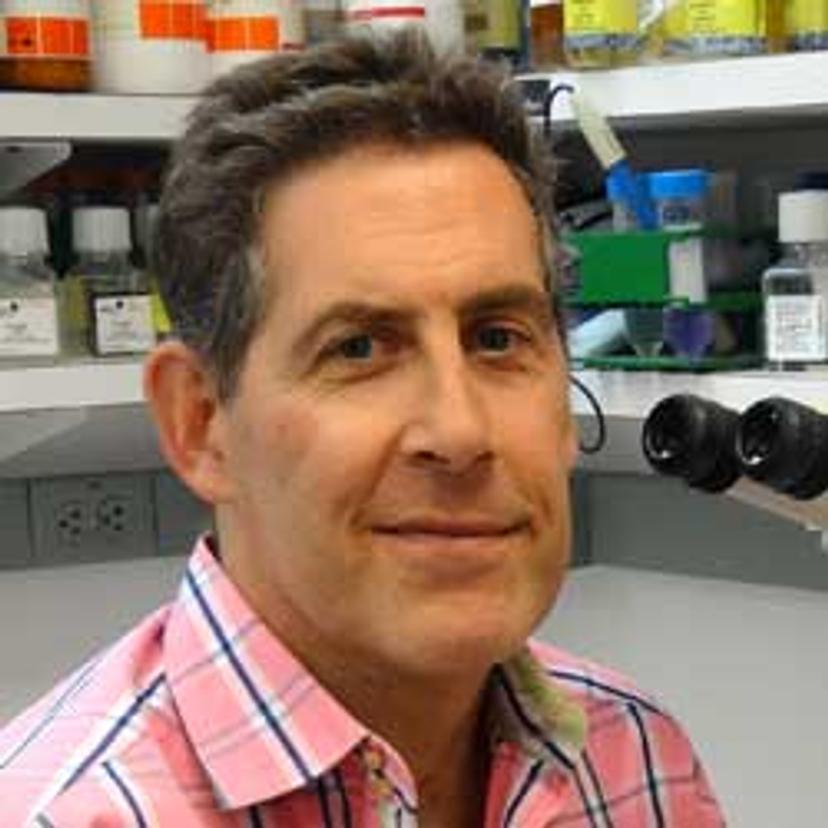Unlocking the Potential of <i>C. elegans</i> for the Study of Rare Disease
Dr. Andy Golden, senior investigator at the National Institute of Diabetes and Digestive and Kidney Diseases (NIDDK), explores the value of C. elegans as an animal model for research
1 Dec 2017

Dr. Andy Golden is an intramural senior investigator at the genetics of early development laboratory, NIDDK, National Institutes of Health (NIH) in Bethesda, Maryland. Here, he discusses the value of C. elegans in studying rare diseases and how gene mutations can help identify potential targets for human therapy. Matt McArdle, Associate Editor for SelectScience®, finds out more about his work.
Can you describe your research using C. elegans to study rare disease orthologs?
There are thought to be 7,000 rare diseases, about 80% of which are thought to have a genetic origin, and many of which are monogenic. The mutations responsible for many of these diseases have been determined at an incredible rate over the past few years, thanks to whole exome and whole genome sequencing of patients and their parents (and maybe even siblings). As the candidate mutation is identified, it’s often a challenge to confirm that a given mutation causes that disease if the patient is the first to have their genome or exome sequenced.
Since humans share about 40-50% of their genes with C. elegans, for many of these diseases, we can generate the exact same mutation in the C. elegans gene and ask if that mutation perturbs function of that gene. We can then characterize the mutant phenotype and use suppressor genetics to identify other genes, that when mutant, suppress the mutant phenotype or essentially restore function to the original mutation. Such extragenic gene mutations can help identify potential targets for therapy.
As a rare disease research advocate, I would desire that any given disease variant is studied in each of these model organisms. You just never know where the next big discovery will come from.
Dr. Andy Golden NIDDK, NIH
Why use C. elegans over other model species?
I have been studying various aspects of C. elegans biology since 1990, so I have lots of experience with the biology and genetics of this organism. I chose C. elegans back then because of its many advantages: we know the entire cell lineage of this animal from the one-cell zygote to the 959 somatic cells that make up the adult. This was the first multicellular organism to have its genome fully sequenced, the power of genetics is awesome, transgenic animals are easy to generate, RNAi works amazingly well, and most recently, with the development of CRISPR/Cas9 genome editing, this has become the easiest and fastest organism in which to make a specific genome edit. The other model organisms — Drosophila, zebrafish, yeast, mice, and others — all have their own advantages, so no one organism is best. My hope is that as disease alleles become available to the public and the entire scientific community, more researchers will decide to study a disease variant in their model organism system of choice. As a rare disease research advocate, I would desire that any given disease variant is studied in each of these model organisms. You just never know where the next big discovery will come from.
What methods do you use to discover disease phenotypes and why?
We have three criteria that must be met for us to study a given disease variant.
Firstly, C. elegans must have an ortholog of the human gene, and as I’ve mentioned, we have a greater than 40% chance of meeting that criteria.
Secondly, we can use WormBase to see what is known about the gene, if mutants already exist or whether other groups have depleted it by RNAi. We will generally make a deletion allele using CRISPR/Cas9 to see the null phenotype and then make the specific disease variant if it’s conserved in the C. elegans gene. We often find that if C. elegans has an ortholog, some of the amino acids altered in patients also exist in C. elegans.
Finally - is there a phenotype to characterize and study? This can be the most challenging because if it’s not an obvious defect like movement, lethality, or sterility, we may have to do more assays to uncover more subtle phenotypes. Knowledge about a given gene from any other organism may help us focus our analysis on a specific tissue or biological process, but sometimes we have few hints about what type of phenotype to expect.
How can you apply your findings in C. elegans to help understand gene interactions in humans?
That’s where genetics comes in handy. If we know anything about the gene, we might make double mutants to see if there are genetic interactions. If not, we would likely try a genetic suppressor screen where we mutagenize our mutants to find animals that no longer have that specific phenotype. Once we figure out what that extragenic mutation is, we’ll know another gene in that pathway. And it’s likely that genetic interaction probably exists in humans as well. If the gene is conserved, so are the genes that interact with it.
Are there opportunities to use C. elegans as a model in clinical and translational research? Absolutely!
Dr. Andy Golden NIDDK, NIH
Do you think that there are opportunities to use C. elegans as a model in clinical and translational research?
Absolutely! There are already examples out there where C. elegans assays have been used to identify potential therapies for disease. A great example is from a colleague at Washington University in St. Louis. Dr. Stephen Pak mis-expressed a variant of a human gene that codes for α1-antitrypsin. This gene, when it bears a very specific mutation, results in a protein that accumulates intracellularly and causes many problems for the patients, the most serious being end-stage liver and lung disease. The only therapy currently is a liver transplant. Dr. Pak expressed this human variant in C. elegans (in this case, there is no C. elegans ortholog to study) and found that it too accumulates intracellularly. A screen then identified compounds that altered this accumulation so that much more of the protein was secreted outside of the cells in which it was expressed. I believe one of these compounds is now in a clinical trial for this α1-antitrypsin deficiency.
This article is produced by SelectScience® in association with NemaMetrix, who champion C. elegans as a vitally important animal model for clinical and translational research by providing an accessible, affordable, easy to maintain model organism with fast genotype-to-phenotype answers. The commentary in this article does not necessarily represent the official views or imply endorsement of the National Institutes of Health.
